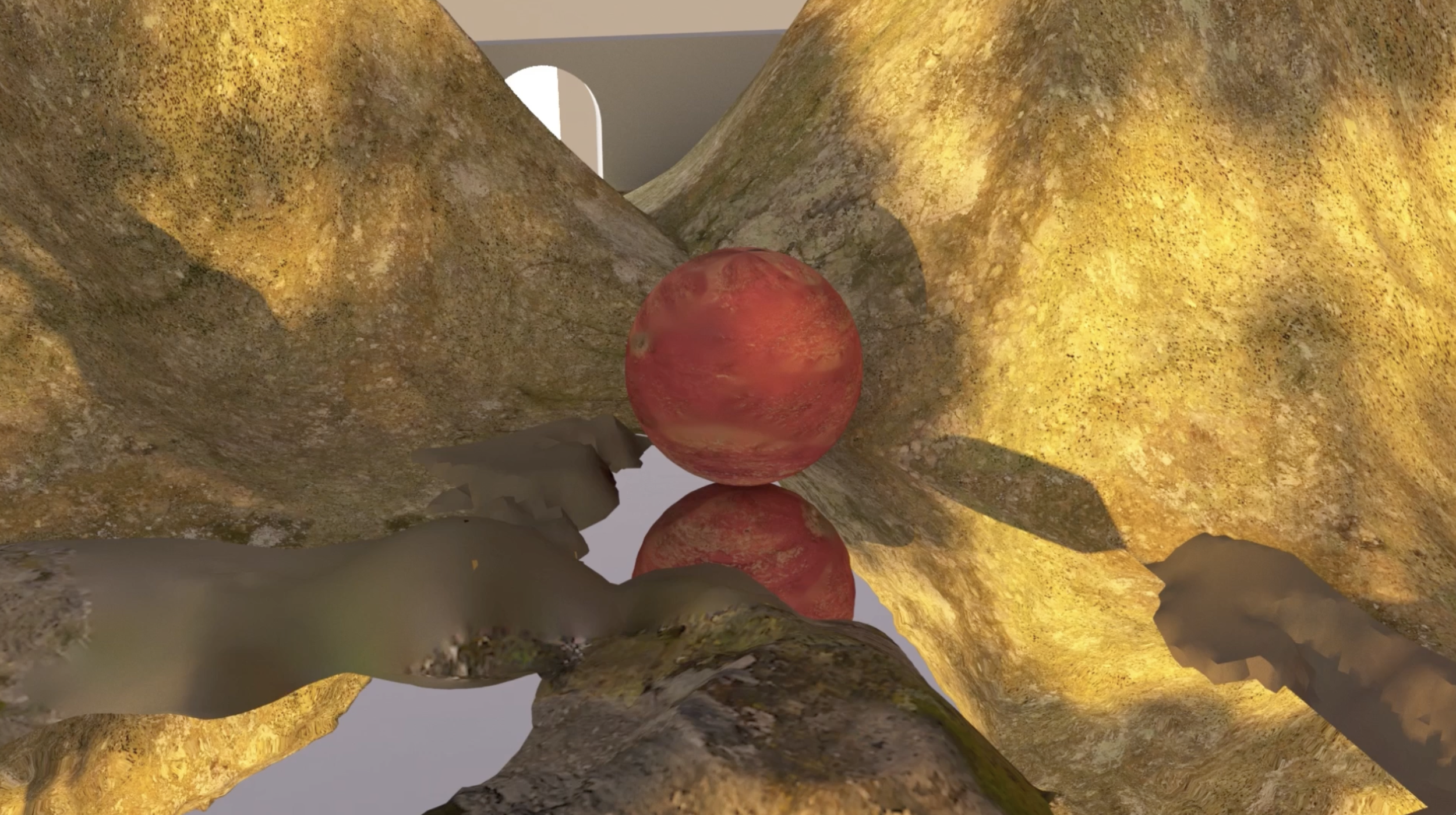
This video is one of MA Studio Project.
The “ZeroHunger” Animation Project embarks on a visual storytelling journey to shed light on the global issue of hunger and food wastage.
UN Zero Hunger Video
About
My focus was on highlighting the unnoticed consequences of infinite mass production in the food industry, revealing the wastefulness that often goes disregarded. Using an apple as a metaphor, the video, though abstract, seeks to intuitively resonate with viewers. The choice of apples as a metaphor symbolizes eco-friendliness and natural growth.
However, the narrative unveils a cautionary tale: if mass production persists without consideration, trust in the seemingly abundant food source may crumble, potentially leading to the disappearance of crops.
Despite the illusion of abundance, the video aims to expose the social imbalances and the suffering of individuals caused by wasteful resource consumption, urging viewers to contemplate the repercussions of unchecked production and consumption practices.
Core Scenes
Part 01.
Intro, starting with Peaceful World where nobody can discover any problematic things which demonstrate our current real world
Part 02.
Contrast with Peaceful World, this is Wasteful World which is hidden Dark Side of the superficial real world
Part 03.
Arousing problems with ‘Call to Action’, depicting the domino effect of our food waste and indiscriminate mass production leading to global hunger
Part 04.
Ending scene, inspired by the Zero Hunger logo and presents the direction we must take in the future until the empty bowl is filled
Ideation
Refining ‘Problem & Call to Action’
Focusing on refining the narrative to emphasize specific negative aspects of the Zero Hunger problem, the approach was narrowed down to create a more impactful and focused storytelling experience.
By strategically pinpointing crucial call-to-action elements and incorporating nuanced metaphors, the animation aimed to strike a balance between surrealism and realism.
Conceptualize with Storyboard
The culmination of these adaptations has given rise to a completely new storytelling narrative and ideation image. Embracing the unique capabilities of Cinema 4D, the revised storyboard strategically utilizes simplified modeling objects imbued with metaphorical meaning.
Objects such as a ball, dominos, and a box serve as powerful symbols, allowing for a more straightforward yet profound representation of the Zero Hunger problem.
Design Process
Mood Board & Prototyping
01/ Intro
Surreal Wasteful World
Illustrating a superficially charming and peaceful world without concerns about food, this section metaphorically represents individuals who currently have no serious worries about food-related issues. The visuals set the stage for the fantastical narrative, drawing attention to the contrast between the idealized world and the underlying food problems.
02/ Body Scenes
Dark World of Wasteful World
Drawing inspiration from “Charlie and the Chocolate Factory,” this section delves into the darker aspects of our real wasteful world. Through visual criticism of wasteful food mass production, the moodboard aims to evoke contemplation about the consequences of unchecked excess and overconsumption.
03/ Ending Scenes
Problem Arousing & Call to Action
This section employs a domino effect to visually portray the progression from the wasteful food world to the serious issue of hunger. The moodboard serves as a visual representation of the narrative’s climax, urging viewers to reflect on the interconnectedness of wasteful practices and their profound impact on hunger-related problems.
Sound Track
Sound Track with Voice-Over Recording
Following the moodboard creation, the next step involved selecting a soundtrack to complement the storytelling concept. The aim was to have the soundtrack deliver the message naturally, akin to a storyteller engaging with the audience.
Inspired by the music from “Bridgerton,” I searched for a fitting classic music track with a captivating and curious quality. I opted to use this track for the Intro, experimenting with its effectiveness in conveying the intended atmosphere.
Two options for the soundtrack are under consideration.
A. The first involves using a trailer song with a woman’s voice exclusively for the Intro, transitioning to just music without voice recording in the latter part of the scene.
B. The second option explores collaborating with Donna to record a script on similar music, incorporating both music and voiceover throughout the entire video.
The decision between these options hinges on their ability to seamlessly integrate with the visuals and effectively convey the narrative’s essence. In the end, I chose second B option using Donna’s voice over recording with background music extracted from Bridgerton’s classic music album.
Insight
Struggling Points?
The decision to transition to a 3D motion graphic concept using Cinema 4D, instead of 2D motion graphic, introduced a unique set of challenges, particularly in crafting a narrative that both embraced the surrealistic nature of 3D motion graphics and effectively communicated the gravity and depth of the Zero Hunger problem.
Main Struggling Points are:
Balance Between Realism and Surrealism
Metaphoric Motion Objects
Avoiding Obvious Metaphors
Maintaining Depth and Significance
Navigating the Uniqueness of 3D Motion Graphics
How did I resolve those struggling points?
In response to those struggles encountered with the shift to a 3D motion graphic concept for the “ZeroHunger” project, a series of strategic adaptations were implemented.
Strategically pinpointing crucial call-to-action elements and incorporating nuanced metaphors
Revising storyboard with simplified modeling objects imbued with metaphorical meaning
Conceptualizing video with surreal motion with new narrative in fantastical and fairy tale-like manner






